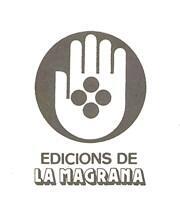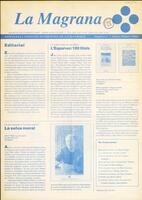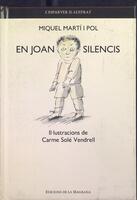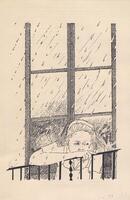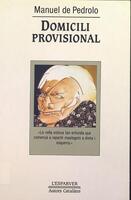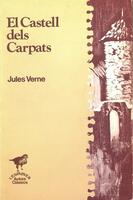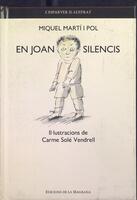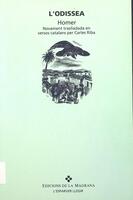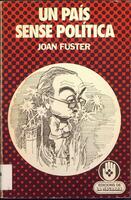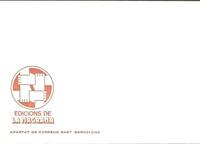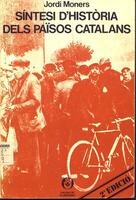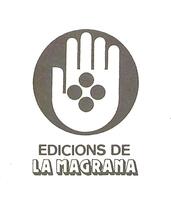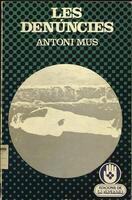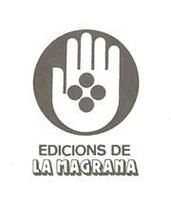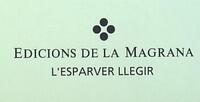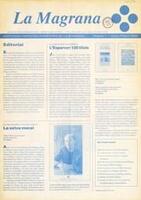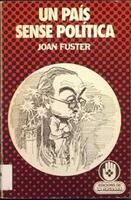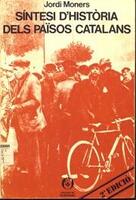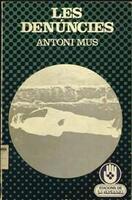Edicions de la Magrana
(Updated 08/10/2024)
Founded in 1975 by Francesc Vidal, Jaume Fuster, Jordi Moners i Sinyol and Carles-Jordi Guardiola i Noguera, all four of them members of the PSAN (National Socialist Liberation Party), Edicions de la Magrana was launched with the goal of becoming a referent in books on history and political thought. Subsequently, after 1978, it was reorganised in an effort to survive the crisis and it added new thematic contents, including literature – children’s books, novels and poetry – cooking, biographies, travel guides and others, all grouped into different collections. From that year on, it expanded its themes and collections, reoriented its economic affairs and welcomed new shareholders such as Àlex Broch, Vinyet Panyella, Lluís Jou, Lluís Simon, Jordi Úbeda, Miquel Horta and Antoni Tàpies. In the early 1980s, Edicions 62 purchased 17% of its shares. The publishing house still exists and focuses on more commercially-oriented literary publications until it was purchased by the RBA Group in 2000 as an independent imprint. In 2004, it permanently merged with RBA.
Placard announcing the appearance of the first three books
+ informationSearch collections
Edicions de la Magrana collection in the Biblioteca de Catalunya
In 2001 Edicions de la Magrana deposited its administrative archive with the Biblioteca de Catalunya; in 2005, RBA turned the deposit into a donation.
Catalogue of publishers from the Bergnes de las Casas collection (Biblioteca de Catalunya)
Catalogues of publishers of Catalonia after 1976 (Biblioteca de Catalunya)
More information and documentation on the works produced
Bonada, Lluís, “La Magrana, un creixement espectacular de la militància política a la promoció cultural”, Serra d’Or, 331 (Abril 1987), p. 71-73.
Edicions de La Magrana, 1976-1991: 15 anys fent llibres. Barcelona: Edicions de La Magrana, DL 1991.
Llanas, Manuel. L'Edició a Catalunya. Segle XIX. Barcelona: Gremi d'Editors de Catalunya, 2004.
Llanas, Manuel. L'Edició a Catalunya. Segle XX (fins a 1939). Barcelona: Gremi d'Editors de Catalunya, 2005
Llanas, Manuel; Chumillas, Jordi. Edicions de La Magrana (1976-2000). Política, literatura i escola. Barcelona: Publicacions de l'Abadia de Montserrat, 2012.
Nadal, Marta, “Carles-Jordi Guardiola i La Magrana, vint anys d’un fruit saborós”, Serra d’Or, 442 (octubre 1996), p. 41-44.
Edicions de la Magrana
Description
Founded in 1975 by Francesc Vidal, Jaume Fuster, Jordi Moners i Sinyol and Carles-Jordi Guardiola i Noguera, all four of them members of the PSAN (National Socialist Liberation Party), Edicions de la Magrana was launched with the goal of becoming a referent in books on history and political thought. Subsequently, after 1978, it was reorganised in an effort to survive the crisis and it added new thematic contents, including literature – children’s books, novels and poetry – cooking, biographies, travel guides and others, all grouped into different collections. From that year on, it expanded its themes and collections, reoriented its economic affairs and welcomed new shareholders such as Àlex Broch, Vinyet Panyella, Lluís Jou, Lluís Simon, Jordi Úbeda, Miquel Horta and Antoni Tàpies. In the early 1980s, Edicions 62 purchased 17% of its shares. The publishing house still exists and focuses on more commercially-oriented literary publications until it was purchased by the RBA Group in 2000 as an independent imprint. In 2004, it permanently merged with RBA.
Placard announcing the appearance of the first three books
The origin of the name of this publishing house (which translates to Pomegranate Publications) can be traced back to the political affinities of the founders, who sought a name that would suggest union. The first proposal was Edicions de les Germanies (Publications of the Brotherhoods), which was rejected because it could be confused with Germania. With the idea of unity, the founders thought of “pinyas” (meaning pineapples, as well as the group of people that make up the strong base of a human tower) and “magranas” (pomegranates) and chose the pomegranate; hence Edicions de la Magrana. As the name was chosen with the idea and intention of expression union or togetherness, the logo had to reflect this, too. The first design was four hands holding each other by the wrist, but it had to be rejected because it was already registered by another brand. Then a logo was designed with one hand and four circles laid out in a diamond shape. Afterwards the hand was removed and only the circles remained, first black in a white square and later white with no square.
The first three logos
Edicions de la Magrana
Authors
As Edicions de la Magrana grew in output, themes and collections, it also expanded its roster of authors. Its publishing policy and its goal of becoming a benchmark in Catalonia and disseminating universal works to make them available to everyone is reflected in its list of authors.
Adrià, Ferran, 1962-
Albanell, Josep, 1945-
Almirall, Valentí, 1841-1904
Apollinaire, Guillaume, 1880-1918
Arenas, Carme, 1954-
Artís-Gener, Avel·lí, 1912-2000
Asimov, Isaac, 1920-1992
Atxaga, Bernardo, 1951-
Barbal, Maria, 1949-
Baricco, Alessandro, 1958-
Batista, Antoni, 1952-
Benet i Jornet, Josep M., 1940-2020
Benguerel, Xavier, 1905-1990
Blake, Quentin, 1932-
Bofill i Mates, Jaume, 1878-1933
Bonet, Magda
Brossa, Joan, 1919-1998
Bucay, Jorge, 1949-
Bulgakov, Mikhail Afanasievitx, 1891-1940
Cabana, Francesc, 1934-
Cabré, Jaume, 1947-
Calders, Pere, 1912-1994
Calvino, Italo, 1923-1985
Cambó, Francesc, 1876-1947
Canela, Montserrat, 1959
Capmany, Maria Aurèlia, 1918-1991
Carbó, Joaquim, 1932-
Carner, Josep, 1884-1970
Casassas, Jordi, 1948-
Català-Roca, Francesc, 1922-1998
Català, Víctor, 1869-1966
Chevalier, Tracy, 1962-
Chomsky, Noam, 1928-
Coll, Pep, 1949-
Crexells, Joan, 1896-1926
Cucurull, Fèlix, 1919-1996
Dahl, Roald, 1916-1990
Duran, Xavier, 1959-
Faner, Pau, 1949-
Ferran de Pol, Lluís, 1911-1995
Fisas, Vicenç, 1952-
Foix, J. V., 1893-1987
Fonoll, Celdoni, 1944-
Font, Pere, 1956-
Fuster, Jaume, 1945-1998
Fuster, Joan, 1922-1992
Gaziel, 1887-1964
Gorki, Maksim, 1868-1936
Greene, Graham, 1904-1991
Guimerà, Àngel, 1845-1924
Guitart, Joan, 1952-
Homer, s. VIII a.C.- s. VIII a. C.
Ibarz, Mercè, 1954-
Kipling, Rudyard, 1865-1936
Lladonosa, Josep, 1907-1990
Lluís, Joan-Lluís, 1963-
Llull, Ramon, 1232-1316
London, Jack, 1876-1916
Maragall, Joan, 1860-1911
Martí i Pol, Miquel, 1929-2003
Martín, Andreu, 1949-
Martorell, Joanot, ca. 1414-1468
Marx, Karl, 1818-1883
Mira, Joan F., 1939-
Molière, 1622-1673
Moncada, Jesús, 1941-2005
Moners i Sinyol, Jordi, 1933-2019
Murdoch, William, 1888-1942
Mus, Antoni, 1925-1982
Nabokov, Vladimir Vladimirovich, 1899-1977
Oliver, Joan (Pere Quart), 1899-1986
Oliver, Maria Antònia, 1946-2022
Oliver, Miquel dels Sants, 1864-1920
Ollé, M. Àngels (Maria Àngels), 1937-2019
Oller, Narcís, 1846-1930
Ovidi Nasó, Publi, 43 aC-17 dC
Palau i Fabre, Josep, 1917-2008
Pedrolo, Manuel de, 1918-1990
Pennac, Daniel, 1944-
Perucho, Joan, 1920-2003
Pi i Sunyer, Carles, 1888-1971
Plató, 428 o 7-348 o 7 aC
Poe, Edgar Allan, 1809-1849
Prat de la Riba, Enric, 1870-1917
Pujol, Jordi, 1930-
Riba, Carles, 1893-1959
Ribó, Rafael, 1945-
Rojals, Mercè, 1966-
Rovira i Virgili, Antoni, 1882-1949
Salvat-Papasseit, Joan, 1894-1924
Shelley, Mary Wollstonecraft, 1797-1851
Sierra i Fabra, Jordi, 1947-
Simó, Isabel-Clara, 1943-2020
Stendhal, 1783-1842
Stevenson, Robert Louis, 1850-1894
Tarradell, Miquel, 1920-1995
Teixidor, Emili, 1933-2012
Tolkien, J. R. R. (John Ronald Reuel), 1892-1973
Tolstoi, Lev, graf, 1828-1910
Torras i Bages, Josep, 1846-1916
Twain, Mark, 1835-1910
Verdaguer, Jacint, 1845-1902
Vergés, Oriol, 1939-
Verne, Jules, 1828-1905
Vernet, Francesc
Vernetta, Xavier, 1956-
Vian, Boris, 1920-1959
Vicens Vives, Jaume, 1910-1960
Vila, Pep, 1952-
Vinyoli, Joan, 1914-1984
Edicions de la Magrana
Illustrators and photographers
Carme Solé Vendrell and Fina Rifà are the publishing house’s main illustrators. They render the drawings for books from the children’s and young reader collections: L'Esparver Poesia, L'Esparver Il·lustrat and Petit Esparver. Other illustrators include Steven Kellogg, Philip Hopman, Imma Pla and Montse Ginesta.
Edicions de la Magrana
Collections
In line with the ideology of its founders, the initial collections of Edicions de la Magrana primarily revolve around historical and political topics. Three of them were created: Alliberament, Biblioteca de Clàssics del Socialisme and La Magrana. The expansion of the range of themes and the publishing output also meant an increase in the number of collections, until the imprint had almost 60, covering all the literary genres. L'Esparver and the ones that spring from it and Les Ales Esteses are the most prominent ones. When it merged with RBA, some of the collections were continued under similar names, such as Biblioteca del Catalanisme and Clàssics de Grècia i de Roma, which originated from Biblioteca dels Clàssics del Nacionalisme Català (1983-1993) and L’Esparver Clàssic (1993-2000), respectively.
Alliberament (1978-1988)
Biblioteca Bernardo Atxaga (1999)
Biblioteca d’empresaris (2014-)
Biblioteca del catalanisme (2013-)
Biblioteca dels clàssics del nacionalisme català (1983-1993)
Biblioteca Jaume Fuster (1999-2000)
Biblioteca Jorge Bucay (2006-)
Biblioteca Roald Dahl (1998-2000)
Biografies (1991-1995)
Butxaca (2006-2008)
Centre Unesco Catalunya (1986-1987)
Clàssics de Grècia i Roma (2012-)
Cotlliure (1986-2000)
Cristalls (1977-1978)
Cuina catalana (1995-1996)
Curs d’història de Catalunya (1983-1987)
Debat (1994-1998)
El petit esparver (1985-2000)
Els llibres de butxaca (1988-1999)
Els orígens (1977-2000)
Fora de col·lecció (1977-2000)
Guies de cuina (1996-1997)
Guies de viatge (1992-1996)
Humor (1996-1998)
Judes Xanguet (1995-1996)
L'Embosta (2010-)
L'esparver (1981-1991)
L'esparver llegir (1981-2000)
L'esparver teatre (1999-2000)
L’esparver ciència (1991-2000)
L’esparver clàssic (1993-2000)
L’esparver crèdits (1997-1998)
L’esparver guia de lectura (1991-1996)
L’esparver il·lustrat (1987-1989, 1997-2000)
L’esparver jove (1997-2000)
L’esparver poesia (1986-1989)
La descoberta (1980-1983)
La magrana (1976-1983)
La magrana general (2003-)
La marrana (1988-2000)
La negra (1986-1998, 2009-)
Les ales esteses (1979-2000, 2004-)
Llegir en català (1994-1996)
Meridiana (1989-2000)
Meridians (1996-1999)
Obres completes (1996-1999)
Pèl i Ploma (1979-2000)
Policia i societat (1983)
Polítiques (1987-1989)
Pràctic il·lustrat (2002-)
Publicacions de la Fundació Bofill (1981-1989)
Quaderns d’alliberament (1977-1988)
Quaderns de l'esparver (2000)
Rutes literàries (1997)
Teatre dels contes (1998)
Tròpics (1996-2000)
Vària (1977-1999)
Venècies (1985-1992)
Edicions de la Magrana
Magazines
Edicions de la Magrana issued a magazine that reports on new publications, the prizes it offers, authors and the press reports of the works it has published. It was initially entitled La Magrana: butlletí de novetats i notícies d’Edicions de la Magrana but after 1995 it was renamed Magrana. Butlletí de novetats i notícies d’Edicions de la Magrana. It began to be published in 1993 and lasted until 1997. The last year it included a supplement called Magrana/Reforma targeted at the world of secondary education. It was primarily bimonthly.
Edicions de la Magrana
Outstanding works
The initial ideological nature of the publishing house is reflected in the early works that it issued:
- Un país sense política de Joan Fuster
- Síntesi d’història dels Països Catalans de Jordi Moners
- Les denúncies d’Antoni Mus

